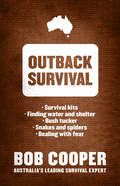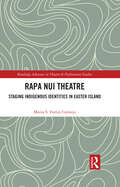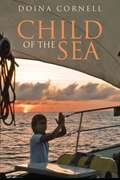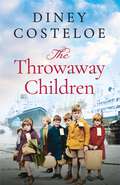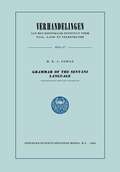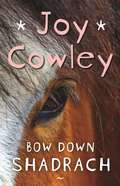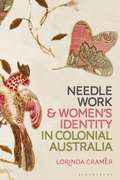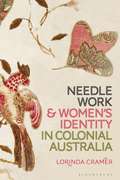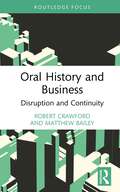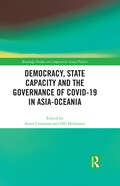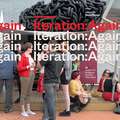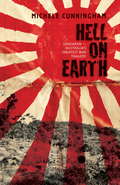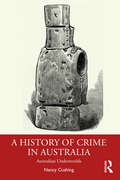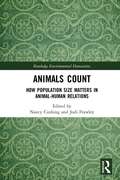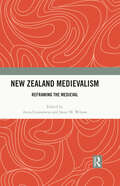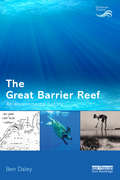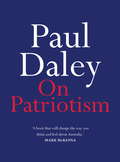- Table View
- List View
Outback Survival
by Bob CooperOutback Survival is a timeless, practical run down on everything you need to know to survive in the outback.Bob Cooper's incredible bushcraft skills have been developed through more than 25 years of experience in Australia's harsh outback. He has picked up tools of survival from the experiences of living with traditional Aboriginal communities, instructing with Special Forces Units, lecturing with the Texas Parks and Wildlife Service on desert survival in the Mexican Desert, delivering wilderness lessons in the UK and learning the skills of the bushmen of the Kalahari Desert in Botswana.Bob has put his own lessons to the test, dropping himself off in the 42C heat of the Australian desert with only a map and soap box sized survival kit, no food, water or sleeping gear, and a 10 day walk across 160km of rough terrain back to safety. He did this alone and showed that with the right knowledge of the land, you can survive in even the harshest of conditions.The outback of Australia is one of the most unforgiving regions of the world, but Bob is committed to protecting and enhancing the experience people have when venturing out into the bush.
Rapa Nui Theatre: Staging Indigenous Identities in Easter Island (Routledge Advances in Theatre & Performance Studies #1)
by Moira Fortin CornejoThis book examines the relationships between theatrical representations and socio-political aspects of Rapa Nui culture from pre-colonial times to the present. This is the first book written about the production of Rapa Nui theatre, which is understood as a unique and culturally distinct performance tradition. Using a multilingual approach, this book journeys through Oceania, reclaiming a sense of connection and reflecting on synergies between performances of Oceanic cultures beyond imagined national boundaries. The author argues for a holistic and inclusive understanding of Rapa Nui theatre as encompassing and being inspired by diverse aspects of Rapa Nui performance cultures, festivals, and art forms. This book will be of great interest to students and scholars of Indigenous studies, Pacific Island studies, performance, anthropology, theatre education and Rapa Nui community, especially schoolchildren from the island who are learning about their own heritage.
Rapa Nui Theatre: Staging Indigenous Identities in Easter Island (Routledge Advances in Theatre & Performance Studies #1)
by Moira Fortin CornejoThis book examines the relationships between theatrical representations and socio-political aspects of Rapa Nui culture from pre-colonial times to the present. This is the first book written about the production of Rapa Nui theatre, which is understood as a unique and culturally distinct performance tradition. Using a multilingual approach, this book journeys through Oceania, reclaiming a sense of connection and reflecting on synergies between performances of Oceanic cultures beyond imagined national boundaries. The author argues for a holistic and inclusive understanding of Rapa Nui theatre as encompassing and being inspired by diverse aspects of Rapa Nui performance cultures, festivals, and art forms. This book will be of great interest to students and scholars of Indigenous studies, Pacific Island studies, performance, anthropology, theatre education and Rapa Nui community, especially schoolchildren from the island who are learning about their own heritage.
Child of the Sea
by Doina CornellA Child of the Sea is the true story of Jimmy Cornell's daughter sailing around the world on the family's small yacht from the age of 7 to 14, based on Doina's diaries, letters and memories. From 1975 to 1981 the Cornell family visited 54 countries, sailed more than 68,000 miles, and travelled about the same distance overland. The story is told from Doina's point of view, although the main part of the book focuses on the family's three-year stay in the Pacific when she is aged between 10 and 13.Child of the Sea is unusual in that it gives a glimpse into a life that most young children couldn't imagine, swimming, diving and playing the days away in deserted anchorages; visiting some of the most beautiful islands in the world; falling in love with the sea in all its ever-changing moods, from balmy trade wind ocean passages to the treacherous breakers that crash onto tropical reefs, and taking a full part in sailing and handling the yacht on passage. The book also tells the story of a girl's coming of age in the South Pacific, understanding different cultures and values, and experiencing at first-hand how people judge each other depending on the colour of their skin - from the time on Easter Island when tourists mistake Doina for a Polynesian girl, to her and her brother's hostile prejudiced reception back in an English school at the end of their journey.What do children need to grow up happy and healthy? Security with their family; an element of risk; freedom to explore the world; openness to other peoples and cultures; closeness with nature and the elements and an appreciation of the environment and our finite resources. The sailing life offers all this and more, and this book captures it all.
Child of the Sea: A Memoir Of A Sailing Childhood
by Doina CornellA Child of the Sea is the true story of Jimmy Cornell's daughter sailing around the world on the family's small yacht from the age of 7 to 14, based on Doina's diaries, letters and memories. From 1975 to 1981 the Cornell family visited 54 countries, sailed more than 68,000 miles, and travelled about the same distance overland. The story is told from Doina's point of view, although the main part of the book focuses on the family's three-year stay in the Pacific when she is aged between 10 and 13. Child of the Sea is unusual in that it gives a glimpse into a life that most young children couldn't imagine, swimming, diving and playing the days away in deserted anchorages; visiting some of the most beautiful islands in the world; falling in love with the sea in all its ever-changing moods, from balmy trade wind ocean passages to the treacherous breakers that crash onto tropical reefs, and taking a full part in sailing and handling the yacht on passage. The book also tells the story of a girl's coming of age in the South Pacific, understanding different cultures and values, and experiencing at first-hand how people judge each other depending on the colour of their skin - from the time on Easter Island when tourists mistake Doina for a Polynesian girl, to her and her brother's hostile prejudiced reception back in an English school at the end of their journey. What do children need to grow up happy and healthy? Security with their family; an element of risk; freedom to explore the world; openness to other peoples and cultures; closeness with nature and the elements and an appreciation of the environment and our finite resources. The sailing life offers all this and more, and this book captures it all.
The Throwaway Children
by Diney CosteloeGritty, heartrending and unputdownable – the story of two sisters sent first to an English, then an Australian orphanage in the aftermath of World War II. Rita and Rosie Stevens are only nine and five years old when their widowed mother marries a violent bully called Jimmy Randall and has a baby boy by him. Under pressure from her new husband, she is persuaded to send the girls to an orphanage – not knowing that the papers she has signed will entitle them to do what they like with the children. And it is not long before the powers that be decide to send a consignment of orphans to their sister institution in Australia. Among them – without their family's consent or knowledge – are Rita and Rosie, the throwaway children. What readers are saying about THE THROWAWAY CHILDREN: 'I haven't felt so immersed in a book in a very long time and have recommended to just about everyone' 'Heart wrenching' 'A truly powerful book'
Grammar of the Sentani Language (Verhandelingen van het Koninklijk Instituut voor Taal-, Land- en Volkenkunde #47)
by Hendrik Karel CowanBow Down Shadrach
by Joy Cowley** Winner of the New Zealand Children's Book of the Year 1990** A classic junior fiction favourite from multi-award winning New Zealand children's author, Joy Cowley.Shadrach is a very old circus-trained Clydesdale horse, and the favourite family pet. When Hannah discovers that Shadrach has been sold to a dog food factory, she decides to mount a heroic rescue and enlists the help of her two younger brothers. From the beginning their plans go seriously wrong. By the time they've argued with the repulsive Wuff Stuff man, hidden Shadrach in a church and a caravan, and floated him on a mussel barge they're in desperate need of rescuing themselves.
Needlework and Women’s Identity in Colonial Australia
by Lorinda CramerIn gold-rush Australia, social identity was in flux: gold promised access to fashionable new clothes, a grand home, and the goods to furnish it, but could not buy gentility. Needlework and Women's Identity in Colonial Australia explores how the wives, mothers, sisters, and daughters who migrated to the newly formed colony of Victoria used their needle skills as a powerful claim to social standing.Focusing on one of women's most common daily tasks, the book examines how needlework's practice and products were vital in the contest for social position in the turmoil of the first two decades of the Victorian rush from 1851. Placing women firmly at the center of colonial history, it explores how the needle became a tool for stitching together identity. From decorative needlework to household making and mending, women's sewing was a vehicle for establishing, asserting, and maintaining social status.Interdisciplinary in scope, Needlework and Women's Identity in Colonial Australia draws on material culture, written primary sources, and pictorial evidence, to create a rich portrait of the objects and manners that defined genteel goldfields living. Giving voice to women's experiences and positioning them as key players in the fabric of gold-rush society, this volume offers a fresh critical perspective on gender and textile history.
Needlework and Women’s Identity in Colonial Australia
by Lorinda CramerIn gold-rush Australia, social identity was in flux: gold promised access to fashionable new clothes, a grand home, and the goods to furnish it, but could not buy gentility. Needlework and Women's Identity in Colonial Australia explores how the wives, mothers, sisters, and daughters who migrated to the newly formed colony of Victoria used their needle skills as a powerful claim to social standing.Focusing on one of women's most common daily tasks, the book examines how needlework's practice and products were vital in the contest for social position in the turmoil of the first two decades of the Victorian rush from 1851. Placing women firmly at the center of colonial history, it explores how the needle became a tool for stitching together identity. From decorative needlework to household making and mending, women's sewing was a vehicle for establishing, asserting, and maintaining social status.Interdisciplinary in scope, Needlework and Women's Identity in Colonial Australia draws on material culture, written primary sources, and pictorial evidence, to create a rich portrait of the objects and manners that defined genteel goldfields living. Giving voice to women's experiences and positioning them as key players in the fabric of gold-rush society, this volume offers a fresh critical perspective on gender and textile history.
Oral History and Business: Disruption and Continuity
by Robert Crawford Matthew BaileyThis book introduces business historians to oral history methodologies and approaches. Using four distinct oral history case studies to explore ideas of disruption and continuity in business history over the second half of the twentieth century, Robert Crawford and Matthew Bailey demonstrate how critical engagement with oral history approaches serves to enhance and enliven business history as well as its relationship with other historical fields. The focus on disruption is used to encompass a broad set of processes such as technological change, the impact of external forces, informal business networks, social constructions of gender, knowledge transfer, firm adaptability and cultural change. The use of oral histories to interpret responses to disruption in the past, and to explore the features characterising business continuity, provides an opportunity to consider the human dimensions, subjective experiences and personal insights of workplace, firm and industry change. It also sheds light on the ways that people and firms respond to disruptive forces through innovation and adaptation – both successfully and unsuccessfully. This succinct and accessible account is essential reading for business historians with little experience in using oral history, as well as those looking to gain deeper insights from their oral history data.
Oral History and Business: Disruption and Continuity
by Robert Crawford Matthew BaileyThis book introduces business historians to oral history methodologies and approaches. Using four distinct oral history case studies to explore ideas of disruption and continuity in business history over the second half of the twentieth century, Robert Crawford and Matthew Bailey demonstrate how critical engagement with oral history approaches serves to enhance and enliven business history as well as its relationship with other historical fields. The focus on disruption is used to encompass a broad set of processes such as technological change, the impact of external forces, informal business networks, social constructions of gender, knowledge transfer, firm adaptability and cultural change. The use of oral histories to interpret responses to disruption in the past, and to explore the features characterising business continuity, provides an opportunity to consider the human dimensions, subjective experiences and personal insights of workplace, firm and industry change. It also sheds light on the ways that people and firms respond to disruptive forces through innovation and adaptation – both successfully and unsuccessfully. This succinct and accessible account is essential reading for business historians with little experience in using oral history, as well as those looking to gain deeper insights from their oral history data.
Democracy, State Capacity and the Governance of COVID-19 in Asia-Oceania (Routledge Studies on Comparative Asian Politics)
by Aurel Croissant Olli HellmannThis book examines the public health responses to the COVID-19 pandemic in the Asia-Oceania region and their implications for democratic backsliding in the period January 2020 to mid-2021. The contributions discuss three key questions: How did political institutions in Asia-Oceania create incentives for effective public health responses to the COVID-19 outbreak? How did state capacities enhance governments’ ability to implement public health responses? How have governance responses affected the democratic quality of political institutions and processes? Together, the analyses reveal the extent to which institutions prompted an effective public health response and highlights that a high-capacity state was not a necessary condition for containing the spread of COVID-19 during the early phase of the pandemic. By combining quantitative and qualitative analyses, the volume also shows that the effect of the COVID-19 pandemic on the quality of democratic institutions has been uneven across Asia-Oceania. Guided by a comprehensive theoretical framework, this will be an invaluable resource for scholars and students of political science, policy studies, public health and Asian studies.
Democracy, State Capacity and the Governance of COVID-19 in Asia-Oceania (Routledge Studies on Comparative Asian Politics)
by Aurel Croissant Olli HellmannThis book examines the public health responses to the COVID-19 pandemic in the Asia-Oceania region and their implications for democratic backsliding in the period January 2020 to mid-2021. The contributions discuss three key questions: How did political institutions in Asia-Oceania create incentives for effective public health responses to the COVID-19 outbreak? How did state capacities enhance governments’ ability to implement public health responses? How have governance responses affected the democratic quality of political institutions and processes? Together, the analyses reveal the extent to which institutions prompted an effective public health response and highlights that a high-capacity state was not a necessary condition for containing the spread of COVID-19 during the early phase of the pandemic. By combining quantitative and qualitative analyses, the volume also shows that the effect of the COVID-19 pandemic on the quality of democratic institutions has been uneven across Asia-Oceania. Guided by a comprehensive theoretical framework, this will be an invaluable resource for scholars and students of political science, policy studies, public health and Asian studies.
Iteration: 13 Public Art Projects Across Tasmania:again
by David CrossIteration:Again documents and reflects upon a series of thirteen temporary public art commissions by twenty-one Australian and international artists that took place across Tasmania from September 18 to October 15, 2011. Produced by Contemporary Art Spaces Tasmania and David Cross, in conjunction with seven partner curators, Iteration:Again presents a compelling array of temporary artworks in largely unexpected places throughout Tasmania. Working to transform our experience of place for a moment in time, each commission seeks to address how temporary interventions or responses by artists to public sites, environments and buildings can serve to open up new ways of understanding Tasmania as a place with very complex cultural, social and spatial resonances. How it might be possible to introduce transformative elements that challenge the notion of a fixed or definitive artwork grounded in one location? By asking the artists to make four different chapters or ‘iterations’ over the course of a four-week period, David Cross challenged each practitioner to think through how change or processes of transition may function to make the art experience an unstable and contingent one. This idea of incorporating change into the work highlights a growing interest by artists in emphasizing art as a potentially theatrical or even fictive medium with the audience experiencing different moments or stages of encounter over a number of weeks. The idea provided for the possibility of narrative sequences, formal investigations, or temporal shifts that saw key additions or subtractions over time. Each commission sought to recast our understanding of public artwork from a discrete event or viewing experience, to a suite of experiences.
Hell on Earth: Sandakan - Australia's greatest war tragedy
by Michele CunninghamThe heart-rending story of the Australians brutally imprisoned in Sandakan, the Japanese POW camp in North Borneo, whose very name came to symbolise cruelty and ill-treatment.In mid-1942, after the fall of Singapore, almost three thousand Allied prisoners of war were taken by the Japanese from Changi to Sandakan. Of those, 2500 lost their lives.Men died at Sandakan and on the infamous death marches: they died from sickness and starvation, torture and appalling violence, or were killed by the guards as they were forced to keep moving along a seemingly never-ending track. Only six Australians survived the death marches, out of the thousand who left ...Michele Cunningham's father was one of those who survived Sandakan, and then Kuching. Through the mateship and common bond of the survivors, she has had access to their stories, and here she gives an account of these courageous men – those who refused to break no matter how badly they were treated; and those brave men who didn't make it. And it is the story of the depths to which the Japanese sank.Hell on Earth is a remarkable story of bravery, brutality, mateship and survival.
A History of Crime in Australia: Australian Underworlds
by Nancy CushingThis book provides a lively and accessible account of Australia’s most prominent crimes and criminals of the nineteenth and twentieth century and offers an informative background for those seeking to understand crimes committed today. A History of Crime in Australia examines the imposition of English law on this ancient continent, and how its operation affected both transported offenders from Great Britain and Ireland, and the Aboriginal and Torres Strait Islander peoples whose own systems of Law were overlaid. Drawing upon cutting-edge research in the field, original work by the author, and essays from leading crime history researchers, it addresses the question of whether there was an Australian underworld. In doing so, it provides background for well known offenders including bushranger Ned Kelly and the razor gangs of the 1920s and for sensational crimes like the Mount Rennie Outrage, the Pyjama Girl Mystery and the Shark Arm Murder and the miscarriage of justice following the disappearance of Azaria Chamberlain at Uluru in 1980. Through these case studies, the book draws out points of tension and cohesion within Australian society, exposing the enduring anxiety around those who were considered to be outsiders, and how the criminal justice system was used to manage these concerns. This book includes a guide to conducting research in the field of Australian crime history and sources for further study. Designed as an introductory text for students, this book will be of interest to those studying criminology and crime history, and anyone who would like to deepen their understanding of crime’s place in Australia’s social and cultural history.
A History of Crime in Australia: Australian Underworlds
by Nancy CushingThis book provides a lively and accessible account of Australia’s most prominent crimes and criminals of the nineteenth and twentieth century and offers an informative background for those seeking to understand crimes committed today. A History of Crime in Australia examines the imposition of English law on this ancient continent, and how its operation affected both transported offenders from Great Britain and Ireland, and the Aboriginal and Torres Strait Islander peoples whose own systems of Law were overlaid. Drawing upon cutting-edge research in the field, original work by the author, and essays from leading crime history researchers, it addresses the question of whether there was an Australian underworld. In doing so, it provides background for well known offenders including bushranger Ned Kelly and the razor gangs of the 1920s and for sensational crimes like the Mount Rennie Outrage, the Pyjama Girl Mystery and the Shark Arm Murder and the miscarriage of justice following the disappearance of Azaria Chamberlain at Uluru in 1980. Through these case studies, the book draws out points of tension and cohesion within Australian society, exposing the enduring anxiety around those who were considered to be outsiders, and how the criminal justice system was used to manage these concerns. This book includes a guide to conducting research in the field of Australian crime history and sources for further study. Designed as an introductory text for students, this book will be of interest to those studying criminology and crime history, and anyone who would like to deepen their understanding of crime’s place in Australia’s social and cultural history.
Animals Count: How Population Size Matters in Animal-Human Relations (Routledge Environmental Humanities)
by Nancy Cushing Jodi FrawleyWhether their populations are perceived as too large, just right, too small or non-existent, animal numbers matter to the humans with whom they share environments. Animals in the right numbers are accepted and even welcomed, but when they are seen to deviate from the human-declared set point, they become either enemies upon whom to declare war or victims to be protected. In this edited volume, leading and emerging scholars investigate for the first time the ways in which the size of an animal population impacts how they are viewed by humans and, conversely, how human perceptions of populations impact animals. This collection explores the fortunes of amphibians, mammals, insects and fish whose numbers have created concern in settler Australia and examines shifts in these populations between excess, abundance, equilibrium, scarcity and extinction. The book points to the importance of caution in future campaigns to manipulate animal populations, and demonstrates how approaches from the humanities can be deployed to bring fresh perspectives to understandings of how to live alongside other animals.
Animals Count: How Population Size Matters in Animal-Human Relations (Routledge Environmental Humanities)
by Nancy Cushing Jodi FrawleyWhether their populations are perceived as too large, just right, too small or non-existent, animal numbers matter to the humans with whom they share environments. Animals in the right numbers are accepted and even welcomed, but when they are seen to deviate from the human-declared set point, they become either enemies upon whom to declare war or victims to be protected. In this edited volume, leading and emerging scholars investigate for the first time the ways in which the size of an animal population impacts how they are viewed by humans and, conversely, how human perceptions of populations impact animals. This collection explores the fortunes of amphibians, mammals, insects and fish whose numbers have created concern in settler Australia and examines shifts in these populations between excess, abundance, equilibrium, scarcity and extinction. The book points to the importance of caution in future campaigns to manipulate animal populations, and demonstrates how approaches from the humanities can be deployed to bring fresh perspectives to understandings of how to live alongside other animals.
New Zealand Medievalism: Reframing the Medieval
by Anna Czarnowus Janet M. WilsonThis volume maps the phenomenon of medievalism in Aotearoa, initially as an import by the early white settler society, and as a form of nation building that would reinforce Britishness and ancestral belonging. This colonial narrative underpins the volume’s focus on the imperial relationship in chapters on the academic study of the Middle Ages, on medievalism in film and music, in manuscript and book collections, and colonial stained glass and architecture. Through the alternative 21st-century frameworks of a global Middle Ages and Aotearoa’s bicultural nationalism, the volume also introduces Maori understandings of the ancestral past that parallel the European epoch and, at the opposite end of the spectrum, the phenomenon of global right-wing medievalism, as evidenced in the Alt-right extremism underpinning the Christchurch mosque attack of 2019.The 11 chapters trace the transcultural moves and networks that comprise the shift from the 20th-century study of the Middle Ages as an historical period to manifestations of medievalism as the reception and interpretation of the medieval past in postmedieval times. Collectively these are viewed as indications of the changing public perception about the meaning and practice of the European heritage from the colonial to contemporary era.The volume will appeal to educationists, scholars, and students interested in the academic history of the Middle Ages in New Zealand; enthusiasts of film, music, and performance of the medieval; members of the public interested in Aotearoa’s history and popular culture; and all who enjoy the colourful reinventions of medievalism.
The Great Barrier Reef: An Environmental History (Earthscan Oceans)
by Ben DaleyThe Great Barrier Reef is located along the coast of Queensland in north-east Australia and is the world's largest coral reef ecosystem. Designated a World Heritage Area, it has been subject to increasing pressures from tourism, fishing, pollution and climate change, and is now protected as a marine park. This book provides an original account of the environmental history of the Great Barrier Reef, based on extensive archival and oral history research. It documents and explains the main human impacts on the Great Barrier Reef since European settlement in the region, focusing particularly on the century from 1860 to 1960 which has not previously been fully documented, yet which was a period of unprecedented exploitation of the ecosystem and its resources. The book describes the main changes in coral reefs, islands and marine wildlife that resulted from those impacts. In more recent decades, human impacts on the Great Barrier Reef have spread, accelerated and intensified, with implications for current management and conservation practices. There is now better scientific understanding of the threats faced by the ecosystem. Yet these modern challenges occur against a background of historical levels of exploitation that is little-known, and that has reduced the ecosystem's resilience. The author provides a compelling narrative of how one of the world's most iconic and vulnerable ecosystems has been exploited and degraded, but also how some early conservation practices emerged.
The Great Barrier Reef: An Environmental History (Earthscan Oceans)
by Ben DaleyThe Great Barrier Reef is located along the coast of Queensland in north-east Australia and is the world's largest coral reef ecosystem. Designated a World Heritage Area, it has been subject to increasing pressures from tourism, fishing, pollution and climate change, and is now protected as a marine park. This book provides an original account of the environmental history of the Great Barrier Reef, based on extensive archival and oral history research. It documents and explains the main human impacts on the Great Barrier Reef since European settlement in the region, focusing particularly on the century from 1860 to 1960 which has not previously been fully documented, yet which was a period of unprecedented exploitation of the ecosystem and its resources. The book describes the main changes in coral reefs, islands and marine wildlife that resulted from those impacts. In more recent decades, human impacts on the Great Barrier Reef have spread, accelerated and intensified, with implications for current management and conservation practices. There is now better scientific understanding of the threats faced by the ecosystem. Yet these modern challenges occur against a background of historical levels of exploitation that is little-known, and that has reduced the ecosystem's resilience. The author provides a compelling narrative of how one of the world's most iconic and vulnerable ecosystems has been exploited and degraded, but also how some early conservation practices emerged.
On Patriotism (On Series)
by Paul DaleyHow has militarisation come to define Australian valour? Why has the long shadow of World War I dominated our sense of patriotism?ON PATRIOTISM explores what it really means to love and serve your country. Paul Daley contemplates ways to escape the cultural binds that tie us to Anzac, British settlement and flag-waving.'Straight from the heart and deeply informed. With Indigenous culture at its centre, Paul Daley has given us a patriotism for the twenty-first century.' PROFESSOR MARK McKENNA
Batavia's Graveyard: The True Story Of The Mad Heretic Who Led History's Bloodiest Mutiny
by Mike DashThe true story of the mad heretic who led history's bloodiest mutiny - 'An adult version of LORD OF THE FLIES that is, moreover, entirely true' Evening StandardWhen the Dutch East Indiaman Batavia struck an uncharted reef off the new continent of Australia on her maiden voyage in 1629, 332 men, women and children were on board. While some headed off in a lifeboat to seek help, 250 of the survivors ended up on a tiny coral island less than half a mile long. A band of mutineers, whose motives were almost beyond comprehension, then started on a cold-blooded killing spree, leaving fewer than 80 people alive when the rescue boat arrived three months later. BATAVIA'S GRAVEYARD tells this strange story as a gripping narrative structured around three strong principal characters: Francisco Pelsaert, the cultivated but weak-willed captain; Jeronimus Cornelisz, a sinister apothecary with a terrifying personal philosophy influenced by Rosicrucianism who set himself up as the ruler of the island; and Wiebbe Hayes, the only survivor with the courage to fight Jeronimus's band. The background to these events, including the story of the Dutch East India Company, and the discovery of Australia, is richly drawn.
